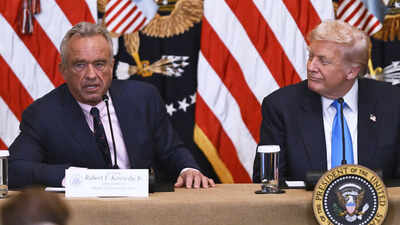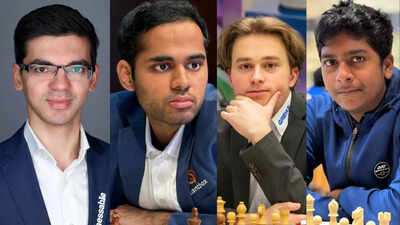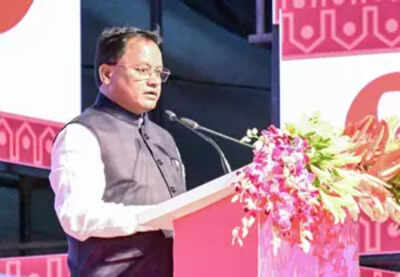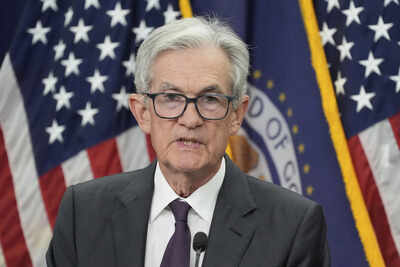Explained: Presidential Fitness Test, why Obama scrapped it and Trump brought it back to schools

In the storied annals of American school life, few memories are as unifying or divisive as the Presidential Fitness Test. For decades, it was the gym class rite of passage: Mile runs timed to the second, push-ups counted with unwavering scrutiny, sit-and-reach stretches measuring flexibility like a litmus test of youth. But by 2012, the very programme that once symbolised national strength had quietly disappeared from schools across the country. Now, more than a decade later, President Donald Trump has revived it, and with it, a cultural debate over health, discipline, and the meaning of fitness in America.
The rise and fall of a national ritual
Introduced under President Dwight D. Eisenhower in 1956, the Presidential Fitness Test was born out of Cold War anxieties. A government-sponsored study had revealed that American children were falling behind their European peers in basic physical competency, a revelation so startling that Sports Illustrated called it “The Report That Shocked the President.” Eisenhower responded by launching the President’s Council on Youth Fitness, positioning physical readiness as a matter of national pride and preparedness.Later, under President John F. Kennedy, the programme took on moral and even patriotic dimensions. In his now-famous Sports Illustrated essay, “The Soft American,” Kennedy warned that the nation’s declining physical standards were a threat to its very fabric. Successive presidents followed suit, and the test became a nationwide benchmark, awarding badges, patches, and certificates to students who performed in the top percentiles.By the early 2000s, however, the test had become increasingly controversial. Though it was designed to inspire excellence, many educators and child health experts began to see it as a flawed, outdated measure, one that privileged athleticism over wellness and often shamed students who struggled to meet its rigid standards.
Why Obama phased it out
In 2012, the Obama administration made a decisive break with the past. The Presidential Fitness Test was formally retired and replaced by the Presidential Youth Fitness Program, a reimagined, data-driven model focused on personal growth rather than competition.The shift reflected a broader evolution in public health thinking. Rather than spotlighting top performers, the new programme emphasised “personal bests” and long-term well-being. Using the FitnessGram assessment, it evaluated students on metrics like aerobic capacity, body composition, and muscular endurance — but in a way designed to reduce peer comparison and performance pressure.“The new program has moved away from recognizing athletic performance to providing a barometer on student’s health,” the Department of Health and Human Services (HHS) noted at the time. It was a deliberate move toward inclusivity, particularly for students with disabilities, varying body types, or low baseline fitness. In Obama’s vision, the goal was not to cultivate elite athletes, but to instill lifelong habits of physical activity.Health experts widely supported the change, citing research that early exposure to high-pressure physical tests could contribute to anxiety, body image issues, and disengagement from exercise altogether. At a time when mental health and inclusivity were gaining currency in education policy, the Obama administration’s decision appeared both timely and humane.
Trump’s revival : A new battle for the body
But in 2025, President Trump has brought the Presidential Fitness Test back, with all its original rigour, symbolism, and competitive edge.The decision, delivered via executive order, is part of the Trump administration’s broader campaign to address what it calls “crisis levels” of obesity, inactivity, and poor nutrition among American youth. The move follows a blistering report released in May by Health and Human Services Secretary Robert F. Kennedy Jr., which warned that rates of childhood chronic diseases, from diabetes to depression, are accelerating at an alarming pace due to sedentary lifestyles.“This was a wonderful tradition, and we’re bringing it back,” Trump said at the signing ceremony. His new order revives the test’s iconic components, the mile run, push-ups, sit-ups, and flexibility tests, and reinstates the Presidential Physical Fitness Award for top performers. In addition, the President’s Council on Sports, Fitness, and Nutrition, now chaired by professional golfer Bryson DeChambeau, has been tasked with designing new award criteria and school programmes to incentivize excellence in physical education.For Trump, the decision is not just about health, it’s about national character. By reviving a programme steeped in Cold War ethos and competitive spirit, the administration aims to instill discipline, resilience, and what Vice President J.D. Vance called a “culture of strength.”
A divided response
The move has drawn mixed reactions. Supporters see it as a long-overdue wake-up call. They argue that a standardized national test can restore accountability in physical education, motivate students, and promote a shared benchmark of health excellence. Secretary Kennedy, who called the award “a huge item of pride” in his own youth, believes the revived programme can reawaken a culture of active living.But critics warn that the return to percentile rankings and fixed physical benchmarks could alienate students who don’t, or physically can’t, meet the standards. Mental health advocates caution that such public assessments can heighten performance anxiety and fuel body image issues in increasingly vulnerable age groups. Educators, too, are concerned about implementation logistics and the risk of fostering a punitive environment in the name of fitness.
A question of ideology
At its core, the debate over the Presidential Fitness Test is about more than push-ups. It’s about what America expects from its children, and what it believes schools should teach them. The Obama-era programme privileged equity, customization, and well-being. The Trump revival favors discipline, measurable excellence, and the revival of a competitive, athletic ethos.In many ways, this tug-of-war reflects a deeper philosophical divide, one between public health as empowerment and public health as personal responsibility. And as with so many debates in modern America, the gymnasium has become yet another battlefield in a wider cultural war.Whether this revival will succeed in changing health outcomes, or simply reignite old debates remains to be seen. But one thing is certain: the Presidential Fitness Test is no longer just a measure of physical ability. It’s a symbol of who we were, who we are, and who we hope to be.





